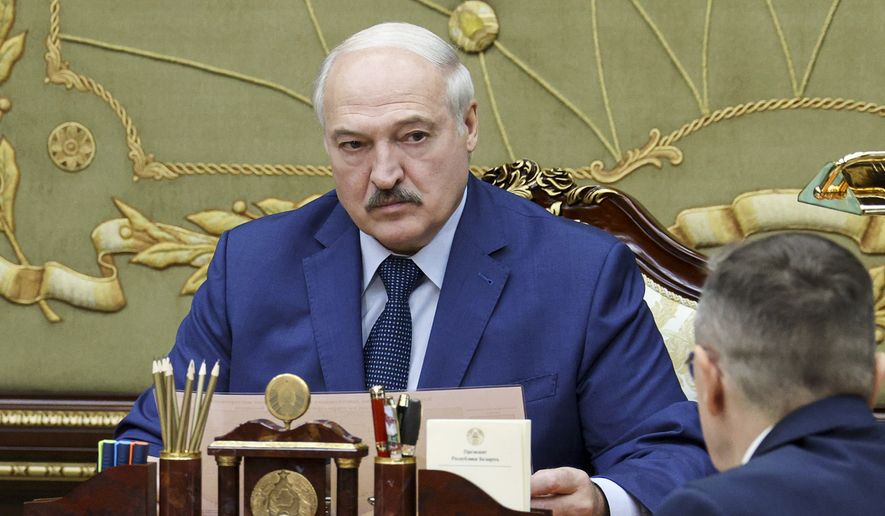Russian military officials said Thursday they have formally begun a major military exercise with neighboring Belarus, despite the unease expressed by a number of countries in the region.
The weeklong Zapad-2021 exercises come as authoritarian Belarusian President Alexander Lukashenko has moved closer to Moscow in the face of mounting U.S. and Western European criticism of his rule.
Mr. Lukashenko, in power in the former Soviet republic since 1994, has overseen a harsh crackdown on dissenters at home and abroad following unprecedented public protests that broke out following a widely discredited presidential election in August 2020.
The Zapad exercises are held every two years, and Russian officials at an opening ceremony Thursday in Nizhny Novgorod rejected criticisms that staging them now was a provocation.
“The Zapad-2021 exercise is purely defensive,” Deputy Defense Minister Nikolai Pankov said in a statement released by the Russian Defense Ministry. “Its purpose is to train personnel in conducting combat operations in current conditions and enhance the operative compatibility of military command bodies of our allies and friendly states.”
The TASS news service, citing Russian government statements, said this year’s maneuvers will involve as many as 200,000 officers and enlisted troops, 80 planes and helicopters, tanks, artillery pieces, multiple rocket launchers and mortars, and 15 ships.
Poland this month declared a state of emergency along its border with Belarus, citing rising tensions over an unchecked surge of migrants coming from Belarus as well as the military exercises, which Warsaw said were the largest in some four decades.
“We are dealing with a wide-ranging political provocation,” Polish Prime Minister Mateusz Morawiecki told reporters this week.
Poland and the European Union have accused Mr. Lukashenko of permitting hundreds of migrants to cross into Polish territory in a protest against sanctions levied against Minsk for its political repression.
“Zapad” is the Russian word for “west.”
• David R. Sands can be reached at dsands@washingtontimes.com.




Please read our comment policy before commenting.